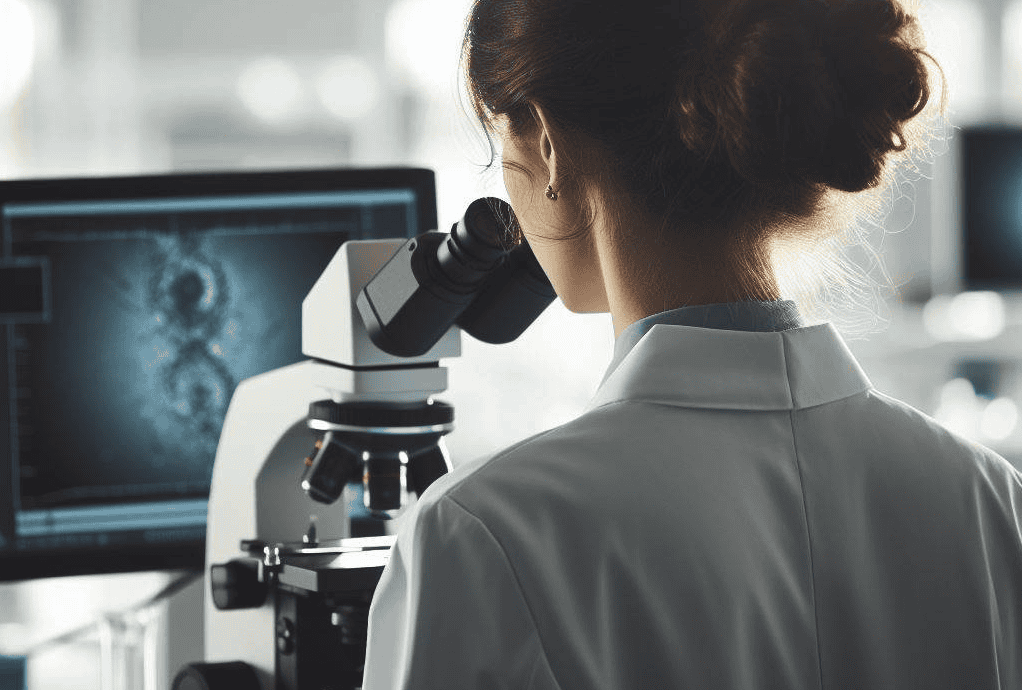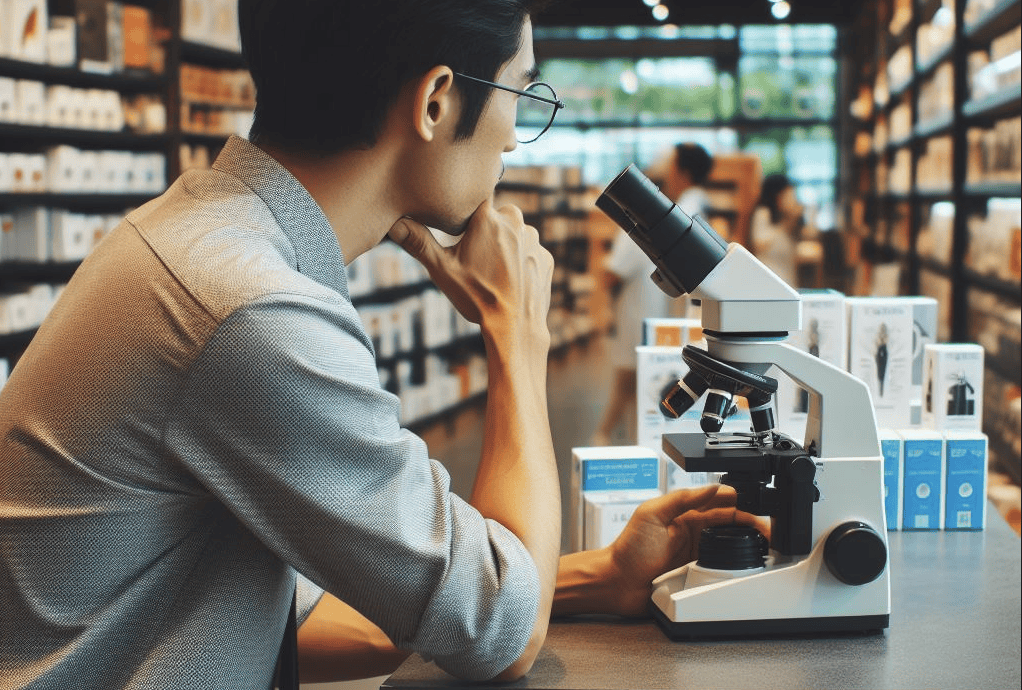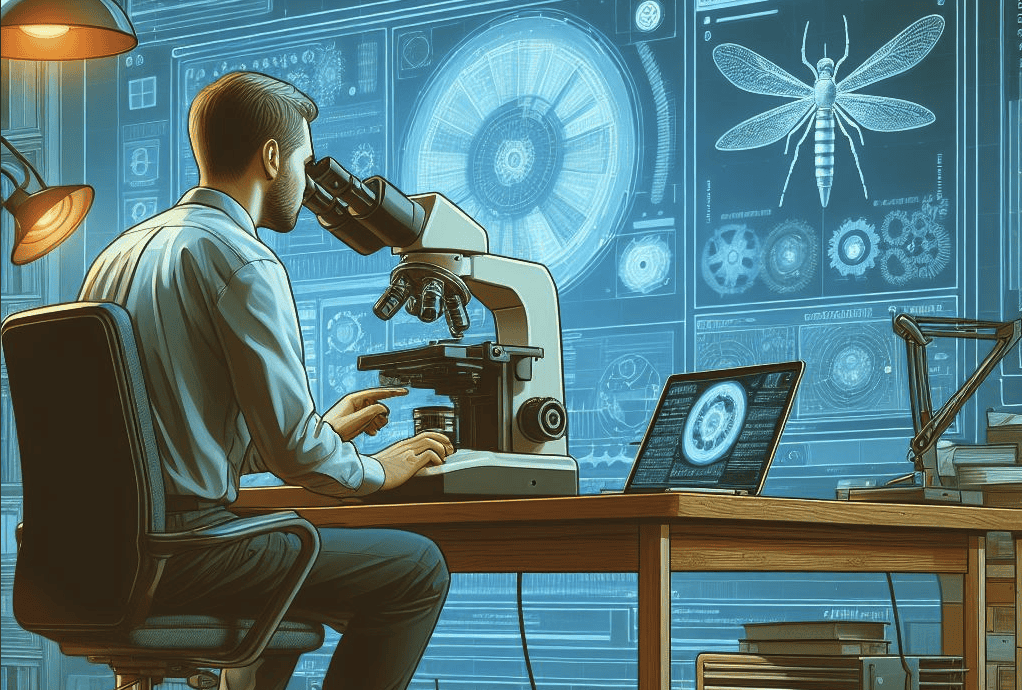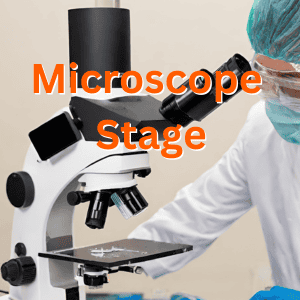When I first peered through the eyepiece of a microscope in my high school biology class, I was utterly mesmerized. The once-invisible world of cells and microorganisms suddenly came alive before my eyes.
Fast forward a few decades, and my fascination has only deepened—especially with the advent of technology. Among the innovations that have revolutionized microscopic explorations, microscope cameras stand out as game changers.
In this ultimate guide, we’ll walk through the extraordinary capabilities of microscope cameras, explore why they are indispensable for scientists and hobbyists, and provide essential tips for choosing the right one for your needs.
Whether you’re an amateur entomologist, a professional lab technician, or someone simply captivated by the hidden intricacies of nature, microscope cameras open up a whole new dimension of discovery.

Introduction to Microscope Cameras
The advent of microscope cameras has revolutionized the field of microscopy, enhancing both educational and research applications. These advancements allow scientists, educators, and hobbyists to capture high-resolution images and videos of microscopic subjects, facilitating a deeper understanding of cellular structures, microorganisms, and nanomaterials.
As a bridge between traditional microscopy and modern digital imaging, microscope cameras have become indispensable tools in laboratories around the world.
Enhanced Visualization and Documentation
Microscope cameras provide an unparalleled level of detail, capturing images that are crucial for accurate documentation and analysis. Unlike traditional eyepiece observation, these cameras afford users the ability to record and store digital images, which can be easily shared and reviewed. This feature is particularly beneficial in academic and clinical settings where meticulous records are essential. In addition to static images, many microscope cameras offer video capabilities, allowing for the observation of dynamic processes such as cellular division and motility in real time.
Integration with Digital Tools and Software
Modern microscope cameras are often coupled with powerful software that enhances their functionality. This software provides a range of analytical tools, from basic measurements to advanced image processing techniques like fluorescence and phase contrast imaging.
The integration with digital platforms allows for immediate image analysis, annotation, and even 3D rendering. As a result, researchers can perform complex data analysis more efficiently, speeding up the pace of scientific discoveries and improving the accuracy of their observations.
Whether for educational purposes or cutting-edge research, the capabilities provided by microscope cameras continue to push the boundaries of what can be observed and understood in the microscopic world.
Applications of Microscope Cameras
The applications of microscope cameras span across diverse fields, illustrating their versatility and utility.
In biological sciences, they are used to study cell biology, microbiology, and pathology, providing detailed images that aid in understanding complex biological processes and disease mechanisms.
In materials science, microscope cameras contribute to the analysis of nanomaterials and the characterization of material properties at the microscopic level.
Educational institutions leverage these cameras to offer students a closer look at textbook concepts, transforming theoretical knowledge into visual experiences.
And that’s not all, environmental science benefits from microscope cameras for studying pollutants, soil samples, and bioindicators, contributing to research in sustainability and conservation.
Choosing the Right Microscope Camera
Understanding Your Needs
When choosing a microscope camera, it is important to understand your specific needs and requirements.
Different applications require different features; for instance, a high-resolution camera might be essential for detailed research in biological sciences, whereas a lower-resolution camera could suffice for a high school biology lab.
Consider the types of specimens you will be examining and the magnification levels you will need. Are you capturing static images or recording live video? Do you need to capture color images or will grayscale suffice?
By answering these questions, you can narrow down your options and focus on cameras that will best serve your specific tasks.
Key Features to Consider
When selecting a camera for scientific or educational purposes, there are several crucial features to keep in mind. Understanding these aspects will help you pick the right camera for your needs.
Resolution and Image Quality
Resolution is one of the most important factors to consider when purchasing a camera. Higher resolution means the camera can capture more detail, resulting in clearer and more accurate images. This is essential for applications such as scientific research, where precise details can be crucial.
- High Definition (HD) vs. Ultra High Definition (UHD): HD cameras offer good image quality at 1080p, while UHD cameras provide even more detail at 4K resolution.
- Megapixels: Generally, the higher the number of megapixels, the better the image quality. However, it is also important to balance this with other features like lens quality and sensor size.
Compatibility with Microscopes
If your camera is intended to be used with microscopes, its compatibility is critical. Not all cameras can easily connect to all types of microscopes, so you need to ensure that your camera will fit your existing setup.
- Mount Types: Check for compatibility with common microscope mounts like C-mount or CS-mount.
- Adapters: In some cases, you may need an adapter to attach the camera to the microscope. Make sure the necessary adapters are available and easy to use.
Software Integration
Good software integration is necessary for a seamless experience, especially if you’ll be analyzing images on a computer.
- Operating Systems: Ensure the camera’s software is compatible with your operating system, whether it’s Windows, macOS, or Linux.
Image Analysis Tools: Some cameras come with specialized software that offers advanced image analysis tools. These can be very useful for tasks like measuring dimensions, annotating images, and enhancing photo quality. - Frame Rate and Speed: The frame rate of a camera—measured in frames per second (fps)—determines how many images it can capture in one second. A higher frame rate is important for applications that require capturing motion and real-time observations.
- Standard vs. High Frame Rate: Standard cameras usually offer 30 fps, which is sufficient for most applications. High frame-rate cameras (60 fps or more) can capture smoother video and are better for dynamic or fast-moving subjects.
- Burst Mode: Some cameras offer burst modes that can capture many images in quick succession, which can be useful for capturing transient events.
Connectivity Options
Modern cameras offer various ways to connect to other devices, and understanding these options will help you choose the camera that fits best with your existing technology.
- USB: USB connections are widely used and provide a simple way to transfer data quickly between the camera and a computer. Ensure the camera supports USB 3.0 for faster data transfer speeds.
- HDMI: HDMI connectivity allows you to display images and videos directly on a monitor or TV, which can be useful for presentations or group observations. Check for the availability of an HDMI port on the camera and ensure it supports the resolution you need.
By considering these key features, you can make a well-informed decision that meets your specific requirements for image quality, compatibility, software integration, speed, and connectivity.

Budget and Long-Term Investment
Finally, while choosing the right microscope camera, do not overlook the financial aspect. Establish a budget that considers not just the camera cost but also ancillary expenses like software, mounts, and adaptation costs for your microscopes.
Keep in mind that a microscope camera is often a long-term investment. Spending slightly more initially for a higher-quality camera can pay off by providing better performance and lasting longer, reducing the need for frequent replacements.
Also, look for warranties and customer support services that can provide peace of mind and assistance in case any issues arise. Balancing your budget with your performance needs will ensure you make a choice that offers good value both now and in the future.
Compatibility with Your Microscope System
Another important consideration is the compatibility with your existing microscope system.
Different microscopes may require different types of camera mounts, such as C-mount or F-mount. Ensure that the camera you choose can be easily attached and is compatible with the optical paths of your microscope.
And do not forget that software compatibility is equally important. The camera should come with or support software that can be integrated with your existing data analysis tools.
This compatibility ensures that the transition from capturing images to analyzing them is seamless, thus boosting productivity and accuracy in your work.
User-Friendliness and Advanced Features
Ease of use is a vital aspect that often gets overlooked. A user-friendly camera with intuitive controls and easy-to-navigate software can significantly enhance your workflow.
Look for autofocus, auto-exposure adjustments, and easy connectivity options like USB or HDMI outputs.
Advanced features, such as time-lapse photography, high-speed video recording, or fluorescence imaging, can provide added value depending on your specific needs. These features can make your work more efficient and provide new possibilities for your research and analysis.
Always review the specifications and, if possible, test different models to find a perfect balance between simplicity and advanced capabilities.
Types of Microscope Cameras
Digital Microscope Cameras
Digital microscope cameras are among the most common types used in both educational and professional settings. They provide real-time video and still images of specimens, which can be viewed on a computer screen.
These cameras are connected directly to the microscope and can be controlled via software, making it easy to capture and save high-quality images.
Digital microscope cameras come in a variety of resolutions, from basic models suitable for classrooms to advanced versions for scientific research.
USB Microscope Cameras
USB microscope cameras are designed for convenience and portability. They can be easily plugged into the USB port of a computer, making them a popular choice for fieldwork and on-the-go observations.
These cameras often come with user-friendly software that enables quick image capture and live streaming of the viewed specimens.
Despite their portability, USB microscope cameras can still offer good image quality and are suitable for various applications, including hobbyist use and preliminary scientific work.
High-Resolution Microscope Cameras
High-resolution microscope cameras are essential for applications that require detailed images. These cameras capture images with high pixel counts, providing exceptional clarity and detail.
They are often used in advanced scientific research, medical diagnostics, and material science to analyze minute structures and detect tiny differences in the specimens under study.
High-resolution cameras can be expensive, but they provide crucial capabilities for professional and scientific needs.
WiFi Microscope Cameras
WiFi microscope cameras introduce a new level of convenience and flexibility to microscopy. By eliminating the need for physical cables, WiFi cameras allow researchers to capture and share images wirelessly.
This technology enables seamless integration with smartphones and tablets, facilitating remote monitoring and collaboration.
WiFi microscope cameras are ideal for situations where mobility and remote access are essential, providing researchers with greater flexibility in data acquisition and analysis.
Integrative Microscope Cameras (attachable/detachable)
Integrative microscope cameras are designed to be versatile, allowing for easy attachment and detachment from the microscope.
These cameras offer the flexibility to switch between different microscopes or use them with other optical devices. This makes them an excellent choice for users who need a single camera to work with multiple setups.
They can also be used as standalone cameras for macro photography or other applications outside traditional microscopy. Many integrative cameras offer high-resolution options and come with specialized software for image capture and analysis.
Common Applications
 Medical and Clinical Labs
Medical and Clinical Labs
Microscope cameras are essential tools in medical and clinical labs. They play a crucial role in the diagnosis of diseases through the examination of tissue samples and blood smears.
Medical professionals use these cameras to capture high-resolution images of cells and microorganisms, aiding in accurate diagnosis and treatment.
Biological Research
In biological research, microscope cameras help scientists observe and record the intricate details of life at a cellular level.
Researchers study the structure and function of cells, tissues, and organs, making advances in understanding genetic disorders, cellular processes, and the effects of drugs.
High-quality imaging is vital for documenting findings and progressing scientific inquiry.
Educational Institutions
Microscope cameras are valuable educational tools in schools, colleges, and universities. They enable students to view minute details of specimens during biology and chemistry classes.
By projecting images on screens, instructors can teach complex concepts more effectively. Students can also document their observations for reports and presentations, enhancing their learning experience.
Industry and Manufacturing
In the industrial sector, microscope cameras are used for quality control in manufacturing. They help inspect the integrity of materials and the precision of small components.
Companies utilize these cameras to ensure products meet standards and specifications, reducing defects and improving overall product quality. Industries such as electronics, automotive, and textiles heavily rely on this technology.
Environmental Studies
Environmental scientists use microscope cameras to study samples from ecosystems, such as soil, water, and air. These cameras help identify microscopic organisms and particulates that are indicators of environmental health.
By analyzing these images, researchers can monitor pollution levels, study biodiversity, and assess the impact of human activities on natural habitats.
Tips for Using and Maintaining Your Microscope Camera
Microscope cameras are invaluable tools for researchers, educators, and hobbyists who need to document and analyze microscopic subjects. Proper use and care will ensure that your camera performs well and lasts a long time.
Here are some essential tips.
Initial Setup
Assembly: Carefully read the manufacturer’s instructions. Assemble all parts gently to avoid damaging sensitive components.
Installation: Connect the camera to your microscope’s eyepiece or camera port, ensuring it is securely attached.
Connection: Connect the camera to a computer or monitor using the appropriate USB or HDMI cable.
Calibration
Alignment: Make sure the camera is perfectly aligned with the optical axis of the microscope to get a centered image.
Focus: Adjust the focal distance and fine-tuning knobs to achieve a sharp image.
Scaling: Use calibration slides if available to set proper scaling for measuring objects in the microscopic field.
Software Use
Installation: Install any software that came with your camera to your computer.
Settings: Familiarize yourself with essential features such as resolution, exposure, and white balance.
Data Management: Learn how to save and export images and videos for future use.
Cleaning and Maintenance
Lens Cleaning: Use a soft brush or air blower to remove dust, followed by lens cleaning fluid and a microfiber cloth.
Camera Body: Wipe down the camera body with a soft, dry cloth to keep it free of dust and grime.
Regular Checks: Periodically inspect all connections, cabling, and components for wear and tear.
Summing Up…
Microscope cameras are incredibly useful for a wide range of applications, from scientific research to educational demonstrations. Proper setup, calibration, and ongoing maintenance are essential for getting the most out of your investment. With careful use and regular care, your microscope camera can provide clear, detailed images for years to come.
Frequently Asked Questions (FAQ)
Here are answers to some common questions about using and troubleshooting microscope cameras.
How do you attach a camera to a microscope?
Eyepiece Camera: Place the camera over the microscope’s eyepiece and secure it with the provided adapter.
Dedicated Port: Some microscopes have a specific camera port. Attach the camera and lock it in place with the appropriate mounting ring or screws.
Verify Connection: Make sure the camera is securely fastened to avoid any dislodgement during use.
Can a smartphone be used as a microscope camera?
Adapters: You can use special adapters to connect your smartphone to the microscope’s eyepiece.
Apps: Download apps designed for microscopy to adjust focus, zoom, and lighting from your smartphone.
Quality: While convenient, a smartphone camera may not offer the same resolution and features as a dedicated microscope camera.
How to troubleshoot common issues?
Blurred Image: Check the focus on both the microscope and camera. Ensure the camera is correctly aligned with the optical path.
No Image Displayed: Confirm all cables are securely connected and that the software is correctly installed and running.
Software Issues: Update the software and camera firmware. Restart your computer and check the compatibility of your operating system with the camera software.


